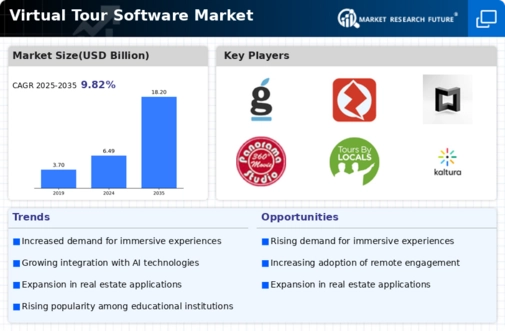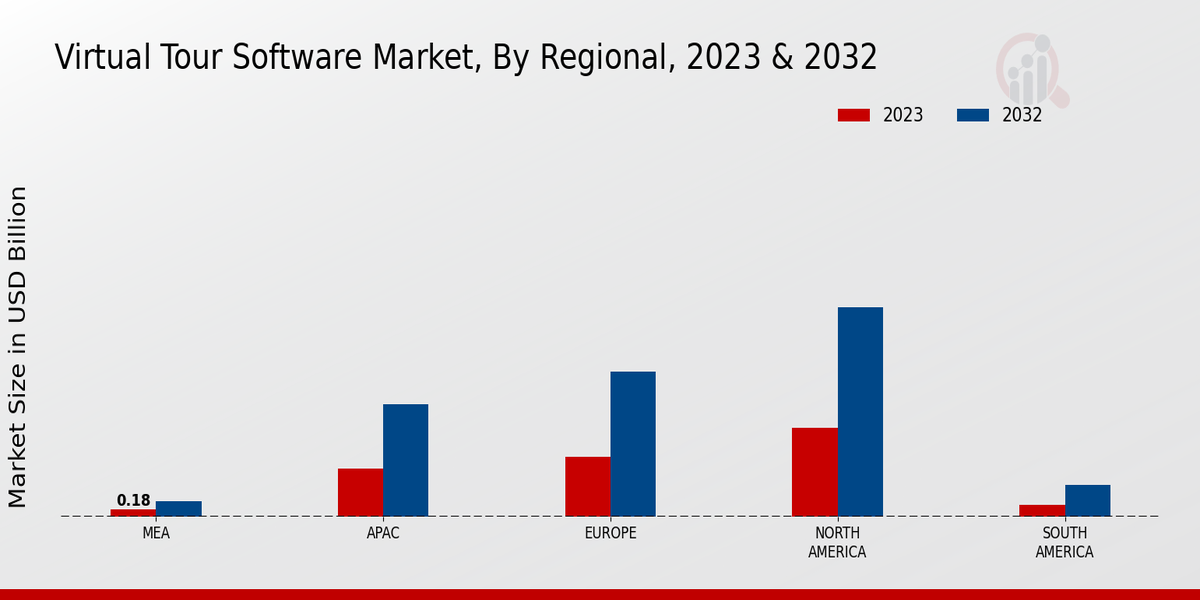Market Growth Visualization
Increased Focus on Remote Engagement
The Global Virtual Tour Software Market Industry benefits from an increased focus on remote engagement strategies. Organizations across various sectors recognize the importance of maintaining connections with clients and stakeholders in a digital landscape. Virtual tours serve as an effective tool for remote engagement, allowing businesses to present their products and services in an interactive manner. Educational institutions, for instance, utilize virtual tours to provide prospective students with a glimpse of campus life. As remote engagement continues to gain traction, the demand for virtual tour software is expected to rise, further driving market growth.
Growth of E-commerce and Online Services
The rise of e-commerce and online services plays a pivotal role in shaping the Global Virtual Tour Software Market Industry. As businesses transition to digital platforms, the need for virtual tours becomes apparent, particularly in sectors like retail and hospitality. Companies leverage virtual tours to provide customers with a comprehensive view of their offerings, thereby enhancing the online shopping experience. This trend is evident in the hospitality industry, where hotels use virtual tours to showcase amenities and attract guests. The ongoing growth of e-commerce is likely to propel the demand for virtual tour software, contributing to the industry's overall expansion.
Rising Adoption in Education and Training
The adoption of virtual tour software in education and training sectors significantly impacts the Global Virtual Tour Software Market Industry. Educational institutions increasingly incorporate virtual tours into their curricula to enhance learning experiences. For example, museums and historical sites offer virtual tours to provide students with immersive learning opportunities. This trend not only enriches educational content but also broadens access to resources for students worldwide. As more institutions recognize the benefits of virtual tours in education, the market is likely to witness substantial growth, reflecting the evolving landscape of learning methodologies.
Increasing Demand for Immersive Experiences
The Global Virtual Tour Software Market Industry experiences a surge in demand for immersive experiences across various sectors, including real estate, tourism, and education. As consumers increasingly seek interactive and engaging content, businesses are adopting virtual tour software to enhance customer engagement. For instance, real estate companies utilize virtual tours to showcase properties, allowing potential buyers to explore homes remotely. This trend is projected to contribute to the market's growth, with the industry expected to reach 6.49 USD Billion in 2024 and potentially expand to 18.2 USD Billion by 2035, reflecting a robust CAGR of 9.82% from 2025 to 2035.
Technological Advancements in Virtual Reality
Technological advancements in virtual reality (VR) and augmented reality (AR) significantly influence the Global Virtual Tour Software Market Industry. Innovations in hardware and software capabilities enable the creation of more realistic and interactive virtual environments. For example, the integration of 360-degree video technology and high-definition graphics enhances user experiences, making virtual tours more appealing. As these technologies evolve, they are likely to attract more businesses to invest in virtual tour solutions, thereby driving market growth. The increasing accessibility of VR devices further supports this trend, suggesting a promising future for the industry.





















